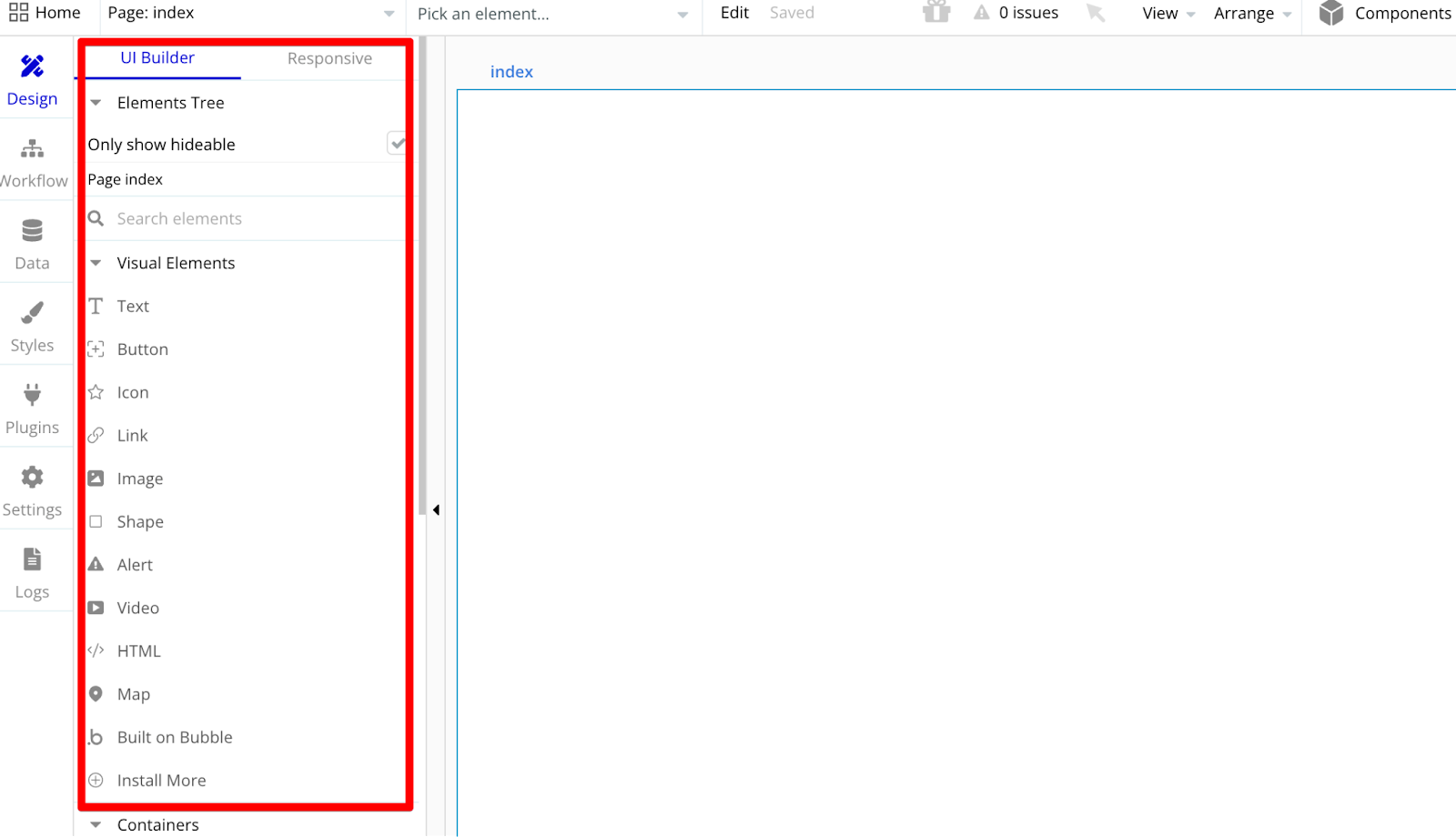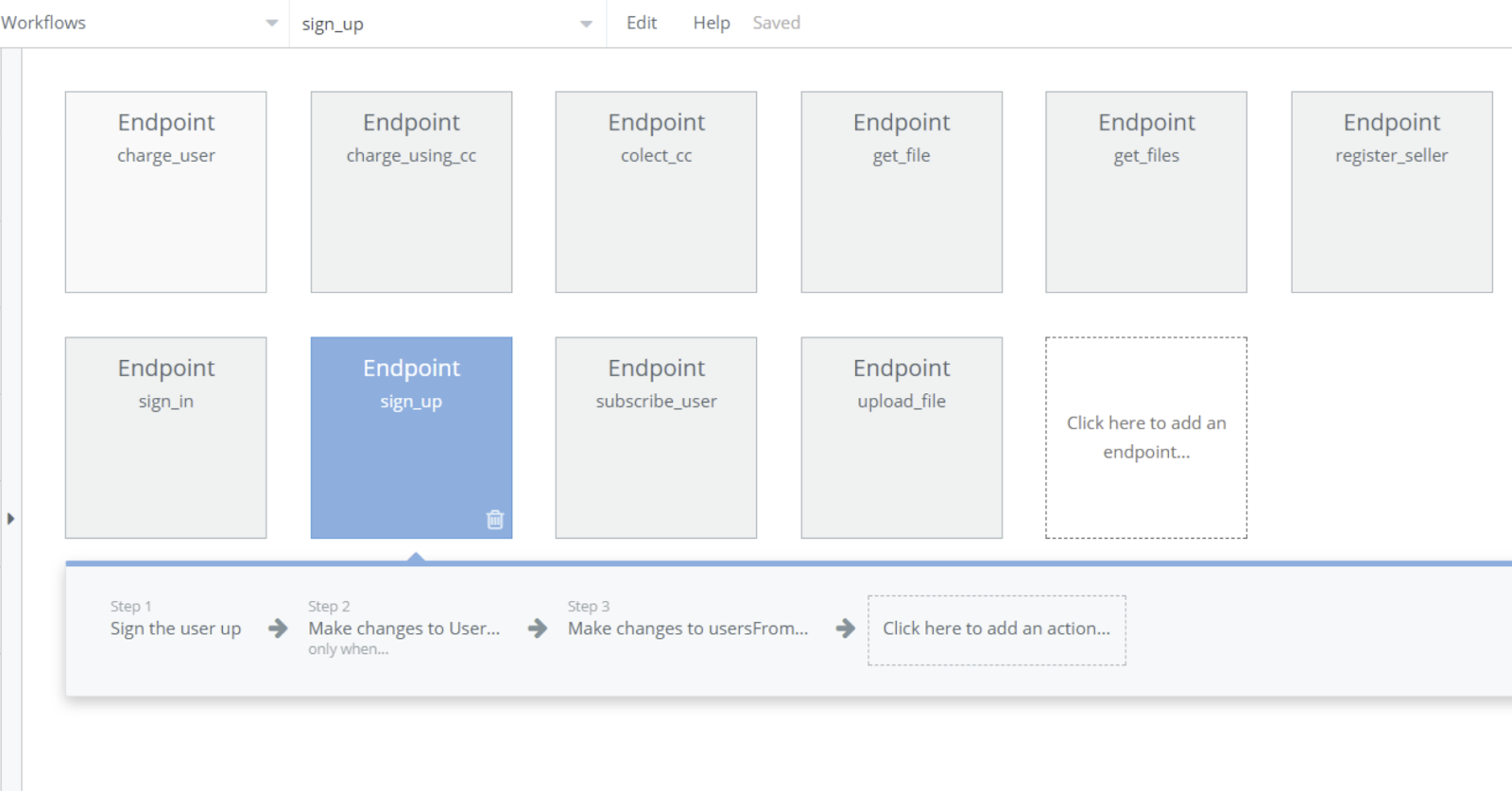Bubble no-code review: Is Bubble the best no-code builder?



We've been building software products with traditional coding since 2008, and we switched to Bubble no-code a few years ago.
In this guide, we wanted to discuss our experiences with Bubble and how it compares to traditional, full code. We'll be diving into the specific functionalities of Bubble that allow us to build advanced, data-driven applications, and we'll also look at a few limitations that Bubble has.
We feel it's important to say that we aren't affiliated with Bubble; we just use it every day to build out client applications, and in our opinion, it's the best no-code builder on the market.
Who are we: We are Belighted, a hybrid software development agency that uses a combination of Bubble no-code and traditional coding to build web applications. This allows you to experience the benefits of Bubble no-code, like lower costs and faster development times, without any of the platform's limitations (we can code certain features ourselves). So, if you're looking to partner with a Bubble agency to develop your application, hop on a 20-minute discovery call with our founder.
Bubble’s full-stack capabilities can be broken up into three parts:
Below, we'll dive deeper into these three areas: front-end, backend, and logic features, as well as the plugins, APIs, and security features that Bubble offers.
When you log into Bubble, you'll be greeted by this dashboard:

This drag-and-drop canvas gives you complete control over what your web application will look like to users.
On the left-hand side, you'll access a bunch of visual elements like text elements, video elements, and input forms. You can drag these elements onto your page and configure their styling properties and positioning.

We’ve built applications with both full-code and Bubble, and we can safely say that this canvas can do almost anything that full-code can. You can create beautiful dashboards that follow all web standards.
Bubble also has responsive capabilities, so your application's design will adapt depending on whether the end-user logs in via desktop, tablet, or mobile. You don’t have to create a separate version for desktop and mobile.
However, there are a few drawbacks to consider. If your application has heavy motion graphics and animation, then Bubble is probably not the best choice. Although Bubble allows you to add custom CSS thanks to the HTML visual element, it thrives when building data-driven applications with basic visuals; think two-sided marketplaces, internal software, and job boards.
Regarding your app's backend, Bubble offers a fully customizable database hosted on Amazon Web Services (AWS). You have control over everything from the tables your application will require to the properties and fields within these tables.

For example, if you want to collect a user's full name, email address, and bank information, you can customize your database to collect this information. And if you want to collect more user information in the future, you can simply add additional fields in your Bubble backend.
Bubble also makes it easy to customize relationships between your records. For example, if you're building a two-sided marketplace, you’d want all a customer's records (payments, personal information, buying history) tied to one another so it's relevant to the customer and you can track everything.
But keep in mind that Bubble doesn’t give you control over the indexes; Bubble handles them automatically. This means that some requests can be extremely long and your data models really need to be thought out in an unusual way.
In terms of security, you don't have to download any plugins or code private APIs because your app’s data is hosted on AWS, which supports 143 security standards.
Bubble also has a whole system of privacy rules. This allows you to add an extra layer of security above your data. You can hide or show tables and fields so if a user isn’t logged in, they won’t have access to sensitive information via an API or unprotected page.
However, Bubble might not be compatible with your industry's data regulations. It's compatible with the most popular ones, like GDPR and CCPA, but it isn't compatible with HIPAA for instance, which is something to consider if you're building an application that stores sensitive patient information.
Bubble's logic capabilities are managed through visual programming, and this is how you're going to get your application to do what you want without writing a single line of code.
In simple terms, Bubble’s visual programming is all about using triggers to perform certain actions, i.e. IF this happens, THEN do that. For example, IF the user clicks the submit button, THEN move their form data into our database.
You can also combine multiple actions and string them in any order to create flows. This logic capability is the main reason you can create advanced applications with Bubble. You can essentially make anything happen based on what a user did.
However, this customizable logic feature comes with a high learning curve. Because Bubble doesn't know what you're building, it's up to you to assemble everything, and this can take several months to grasp if you haven’t used Bubble before.
Side note: Even though you're building an application without any code, there's still logic involved, meaning your thinking needs to be strategic regarding how your workflow and overall architecture will look.
Another amazing function that has become an integral part of our no-code development process is Bubble's plugins and API connections.
If Bubble doesn’t have a specific visual element or workflow action that you want, simply head to the plugin marketplace. Here, you'll find thousands of free and paid plugins that offer additional capabilities.

For example, if you want to charge users a subscription inside your application, you can download the Stripe plugin. This plugin allows you to complete marketplace payments and send users a text message if their payment fails.

Or, if you want to interact with third-party applications, you can download Bubble's free API Connector. This plugin lets you connect to anything that exposes a JSON-based, RESTful web API. You can then fetch data from these applications and trigger actions on the service’s end.
We also like that Bubble allows us to code our own private plugins and APIs, which is helpful if a client wants a feature that Bubble doesn’t have. This is something to keep an eye out for if you can code because you’re essentially combining the benefits of no-code (quick development and lower costs) with full-code (custom features).
For instance, one of our recent clients, The Enneagram Institute, wanted us to add a reporting feature to their application that’ll allow them to get a better understanding of student behaviors. However, we couldn’t find a report generation system on Bubble that met our client’s needs, so we built one from scratch and used the API connector plugin to access this third-party application.
For most new developers, hosting and security may seem intimidating because, with traditional code, you'll have to configure the settings around your servers, i.e. who controls the servers, what subscription plan is best, how many servers you need, etc.
Fortunately, Bubble takes care of all of this, so you don't have to worry about hosting or security.
As mentioned above, Bubble applications are hosted on AWS, the global standard for internet hosting. Many of the most popular websites are hosted on AWS, including Netflix, Lamborghini, and Nordstrom and the security that comes with AWS is enough for many first-time builders.
Quick tip: Your app's main infrastructure will be hosted on servers located in the United States. If you want your application hosted on a server outside the United States, sign up for one of Bubble's dedicated plans, and they'll set this up for you.
If you have a team of developers helping you build your application inside Bubble, you can use Bubble's collaboration features and version control to work on your application together. As the owner, you can invite editors to develop your application and give them varying levels of access, such as view only, view and edit, view and run, and hide production content.
You can also sync all the changes you and your team are making so everyone accesses the most up-to-date version of your app.
If you'd like to revert to an older version, you can use Bubble's version control. This is critical to becoming a better citizen developer and building the best application possible. Bubble’s version control will give you a detailed picture of previous versions of your app so you can potentially revert back to them if needed, helping you troubleshoot any problems.
We also wanted to give you an idea of what Bubble is capable of, so we decided to talk about some of our recent projects: Enneagram and Innpact.
We recently launched the My Personality application for The Enneagram Institute. This application allows coaches to test students and generate in-depth reports about a student's personality, strengths, and weaknesses.
We used Bubble to build the front-end, backend, and logic features of My Personality. The only thing we couldn’t build with no-code was the reporting system since Bubble didn’t have this feature, so we coded it ourselves.
Bubble allowed us to deliver My Personality to The Enneagram Institute in a couple of months and quickly gather feedback, helping us cut down on costs and pass this cost savings to our client.
Innpact is a financial services provider and we recently built a web application for them. Around 30 percent of the application is hosted on Bubble and we used Bubble’s drag-and-drop canvas to build out the entire front-end.
Because Innpact had to meet specific financial regulations, we decided it would be better to build the backend with full-code.
Innpact needed to meet GDPR regulations, which meant that all data collected by EU citizens needed to be stored on servers inside the EU. So we separated the backend, data storage, and Bubble front-end to accomplish this.
The major limitation with Bubble is that you can't export your application's code to an external system, like another no-code builder. This essentially means that Bubble applications only work on Bubble.
Similarly, you can't import code from another no-code builder and have it automatically work on Bubble. This can be a dealbreaker if you're already using another no-code builder and want to migrate your code into Bubble.
However, you can import design from Figma and you do own your data. You can export your app's data to a CSV file or API. It’s just that the architecture of your Bubble app, i.e. the database structure, the pages, and the logic, will always live inside Bubble.
If you’re thinking about building a web application with Bubble and you don’t feel like overcoming the steep learning curve of structuring your workflow and overall architecture, book a discovery call with our team.
During this call, we’ll walk you through our development process, from building an MVP to getting your first customers.
If this sounds good to you and you’d like us to walk you through this process in more detail, book a call here.